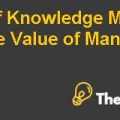
Summary
The basic direction of the organization can be defined and maintained by the governance of the organization through different processes, policies, structures, rules, and agreements. The effective governance focuses on creating and encouraging a suitable identity for the organization and its members, setting a sensible and motivational direction of the organization, and maintain the organization’s discipline to achieve these ends.
The family business system consists of three entities; Ownership, Family, and Business. The family business system refers to the interdependence and overlapping nature of the three subsystems. The family and ownership groups have their goals and distinctive features to treat their members. Each group should have a well-defined role in the governance of overall subsystem of the family. All the groups have further subgroups having their needs, goals, and attitudes.
Family governance is a method of organizing long and short-term plans, decisions, rules, policies, and values. It is also a method of building consensus and oneness in the group related to the direction and goals of the family venture. The family can form a family council, and choose members to be the council members, or seize family assemblies and include all members of the family. The council or assembly can focus time and power on articulating a vision, a legacy, bonding exercises, team building, and formal meetings depending on the choices. The family council represents the whole group of family members when communicating with the owners’ council, so that they can make obvious their collective needs and even concrete decisions that are then evaluated.
The governance needs of the family business system change as the family, business and ownership grow in terms of size and complexity. The family ownership stages of the family business are; controlling owner, sibling partnership, and cousin consortium. Controlling owner stage needs a simple governance structure to meet its governance needs. Sibling Partnership stage is more to formalizing business than controlling owner stage. Cousin consortium stage is big and spread out geographically. It focuses on more systematic planning and setting policies than the other two stages.
- How does your family and business leadership group make decisions in your family business system?
The leadership structure in a family-held business can be more complex as compared to other companies. A senior family member who has no active role in the company’s board is the example, who may still exert an important influence because of the respect and trust he orders with family members. This flow of authority makes it complicated to take decisions about the direction and leadership structure of the organization especially if succession is being considered.
One common structure for the family business is the three-circle based system. It calls for three types of participation by family members who operates at one, two or all three levels:
- Shareholder – family or outside owners
- Employee - including top management
- Board Member- with or without non-family members
Structure and roles tend to change over time. For example, a man starts a business may get involved in the business. Issues can developif they are not carefully integrated with the employ his brothers and sisters, cousins, siblings, etc. The business’ structure calls for him to run the company and maintain the principal ownership stake.
Board of Directors
The Board of Directors in a family normally operates in the same way as it does in a traditional business system.
The company board concerns itself with the growth of the business which serves the family’s long-term interests. This effective board focuses on business’ direction and risk improvement, leaving decisions to management. The presence and impact of the board of directors mainly depend on the age of the business.
In the first generation, business is controlled by a single owner and there may not be a board in place. A board of directors at this level is made up of family members and friends and to assure legal requirements and provide some perspective....................
This is just a sample partial case solution. Please place the order on the website to order your own originally done case solution.
Review goals and ingredients in management (or wheel) of the family business. Explores the high management of the family business, its owners, and family. Focuses on how these governance structures, processes, plans and agreements interact. "Hide
by John A. Davis, 14 pages. Publication Date: Aug 04, 2006. Prod. #: 807019-PDF-ENG












